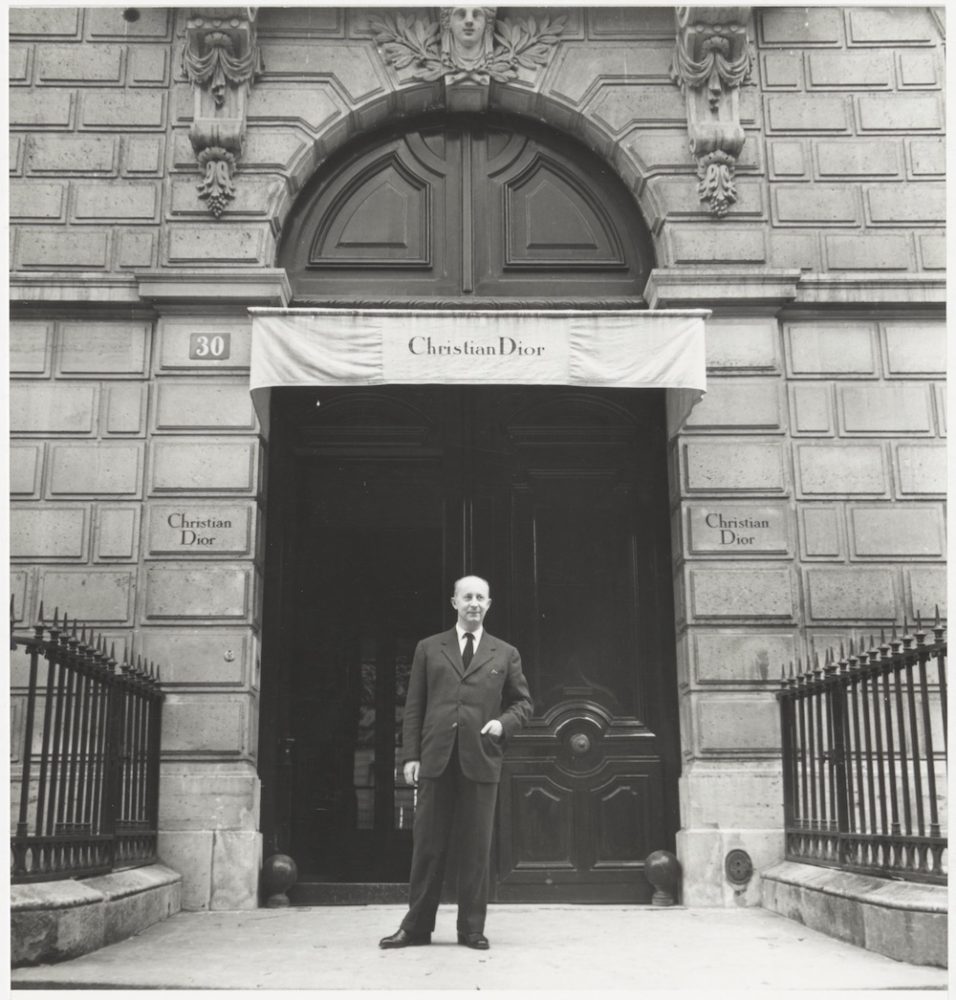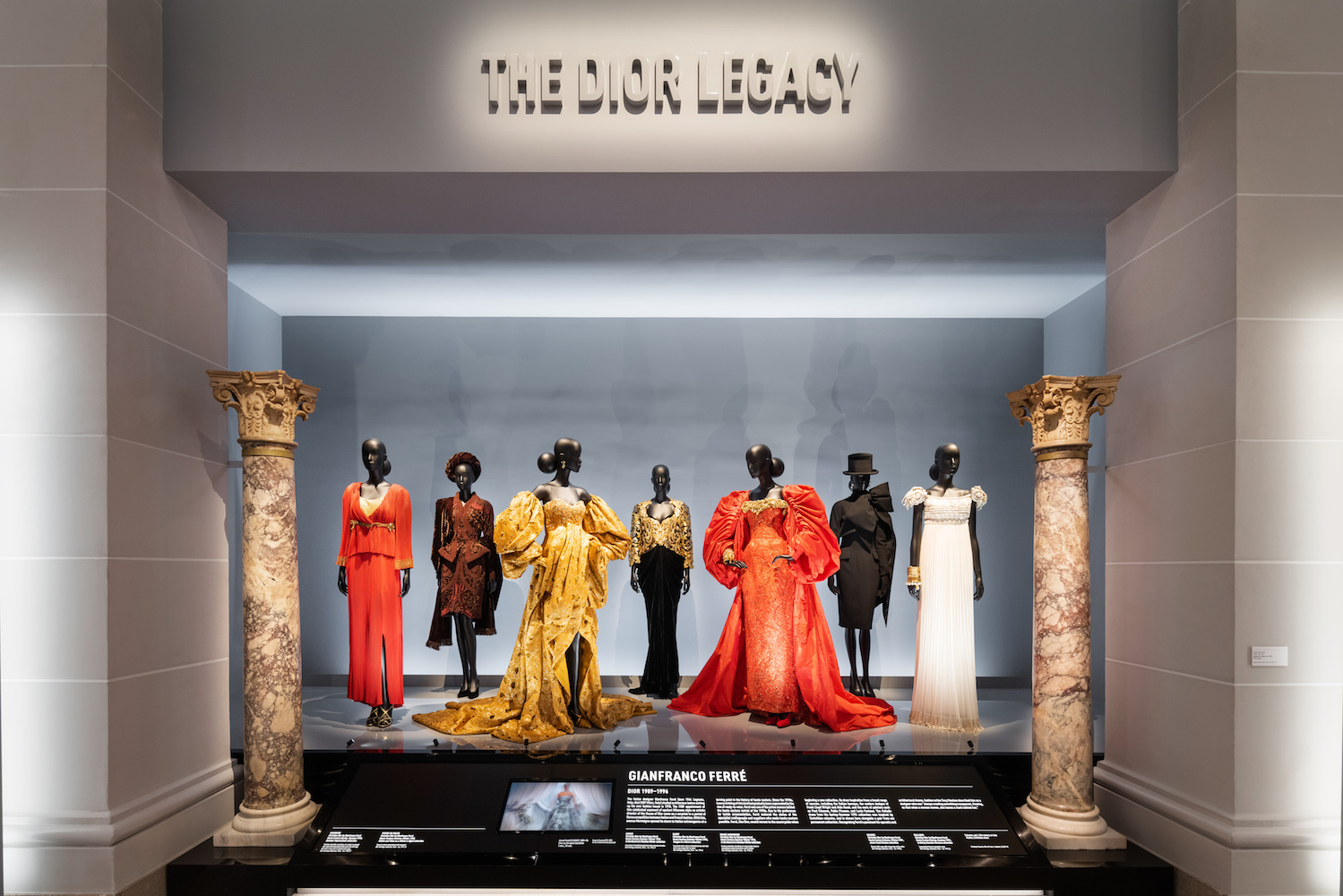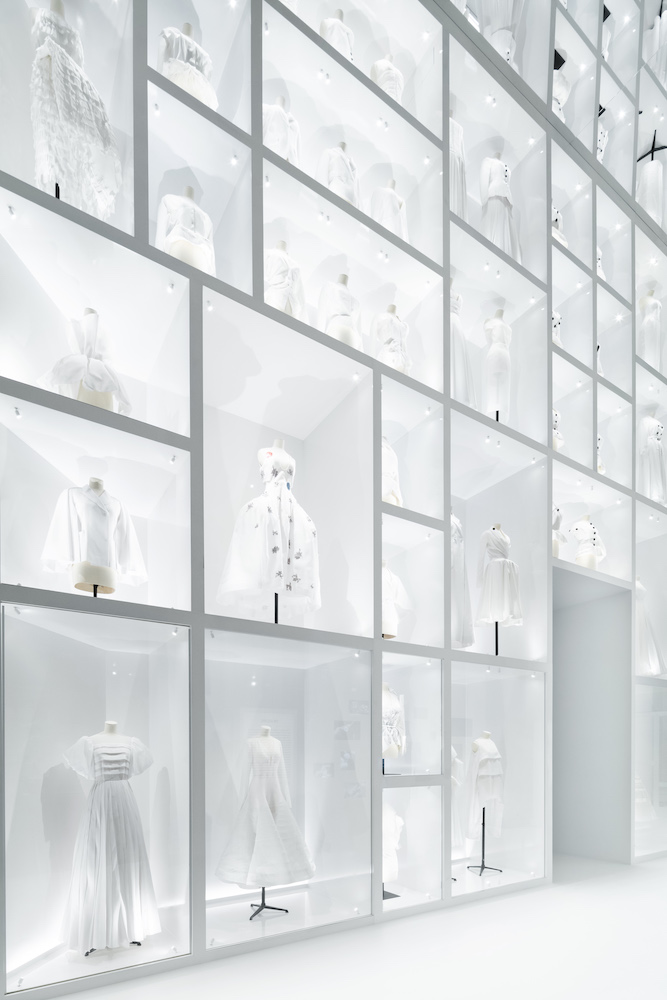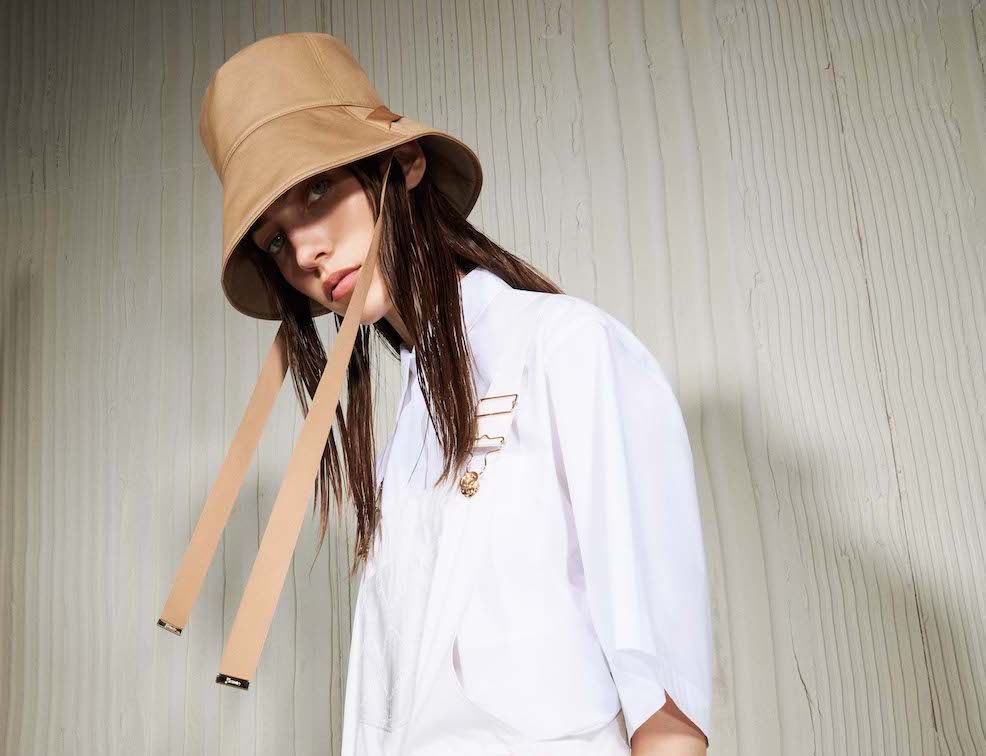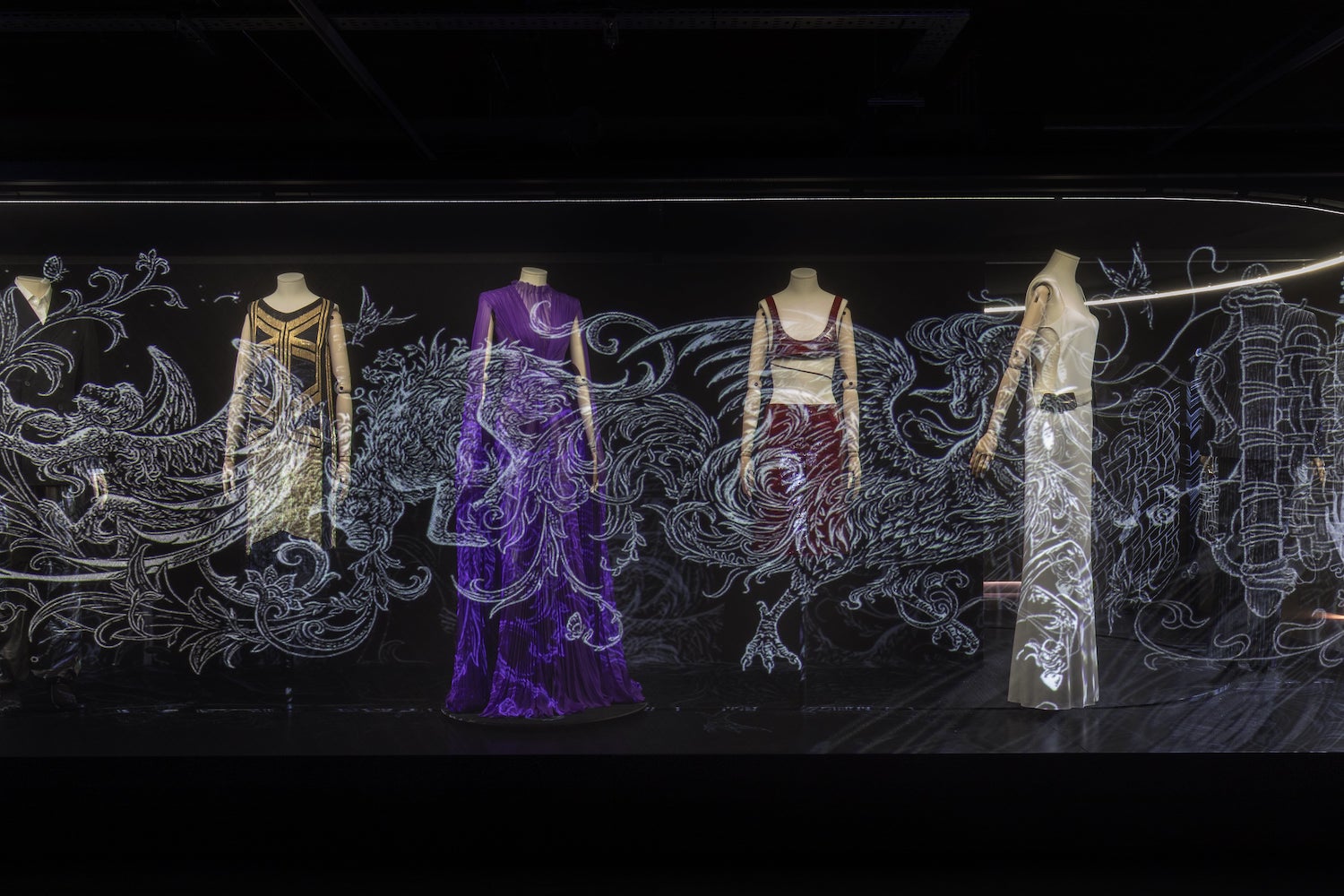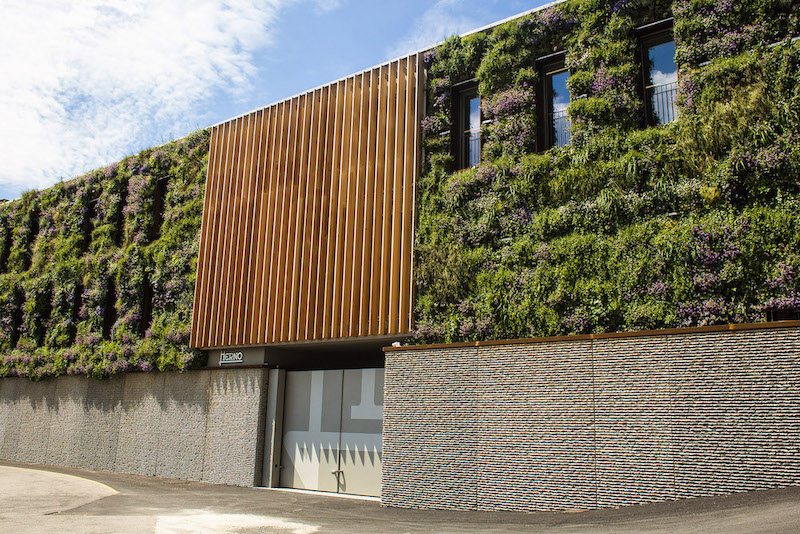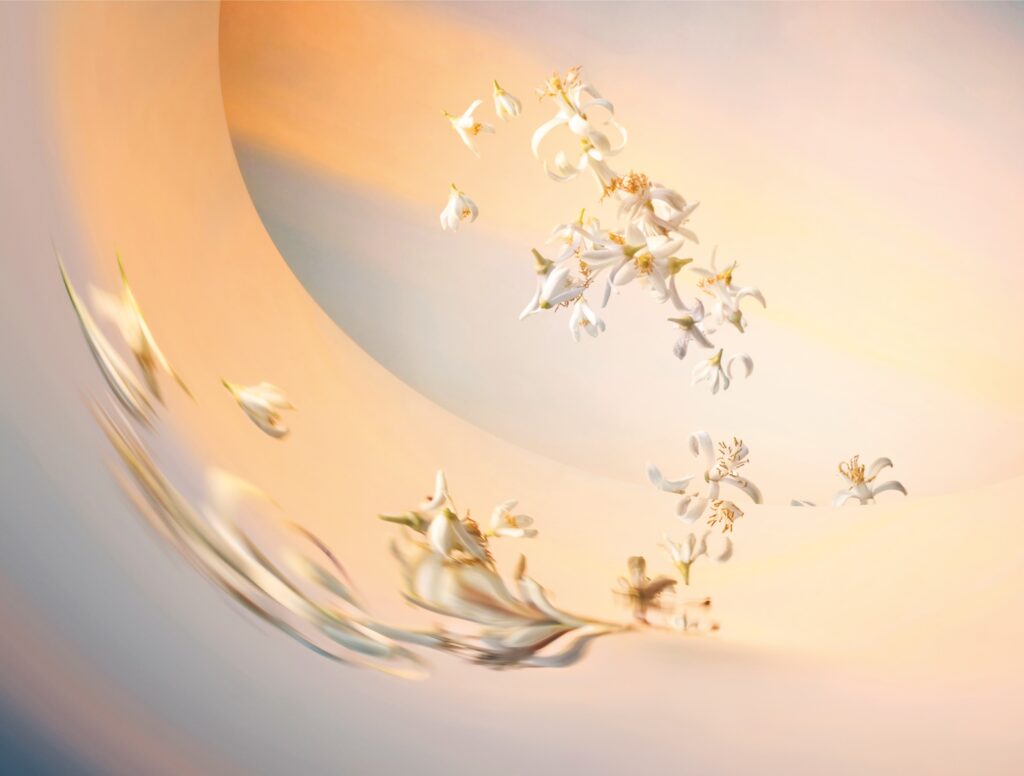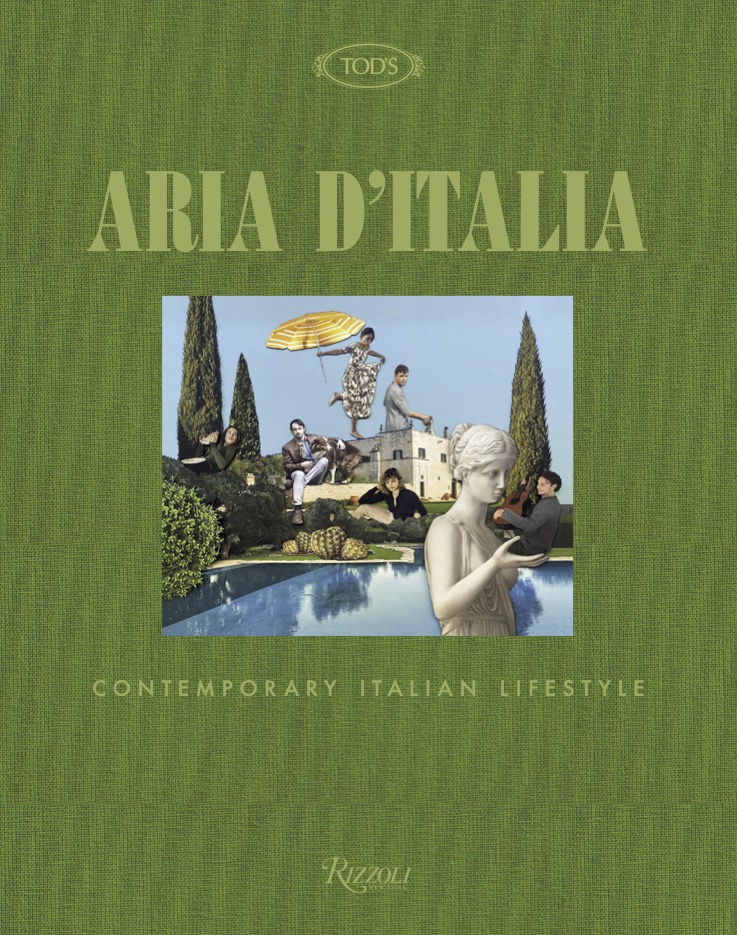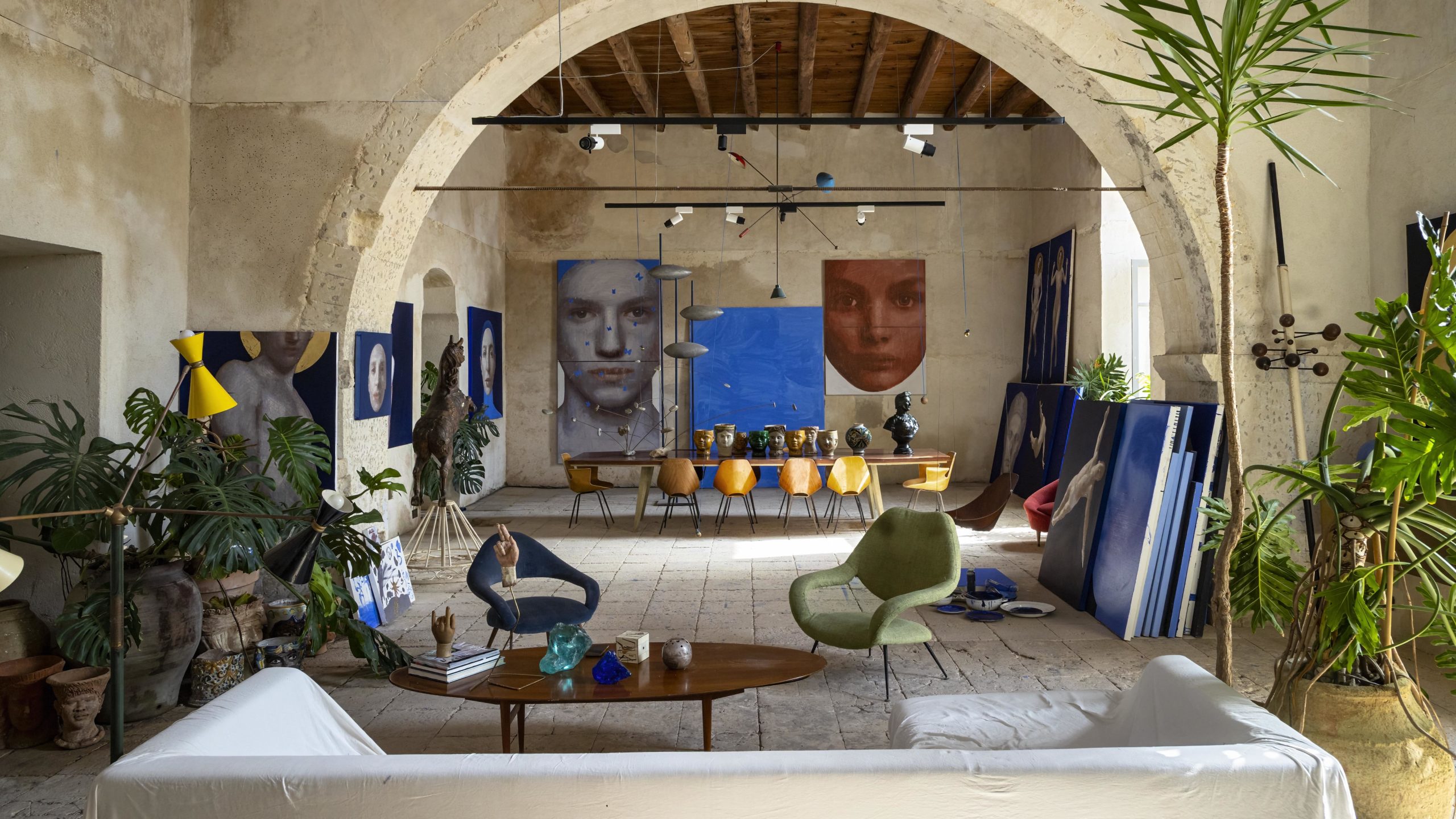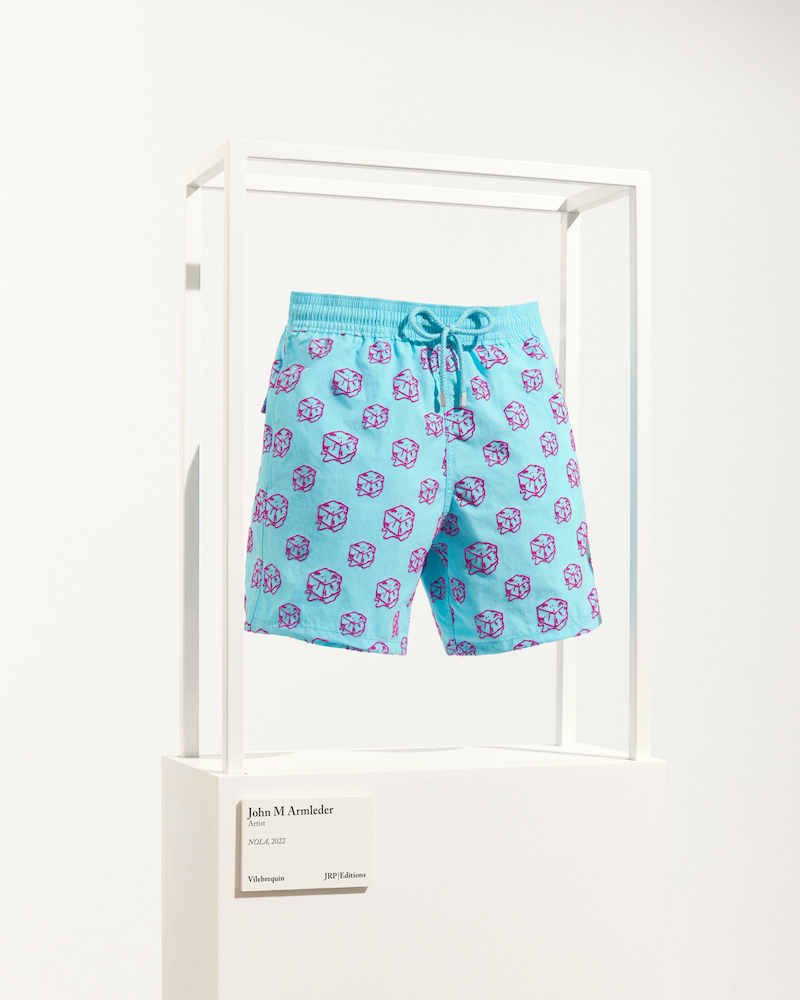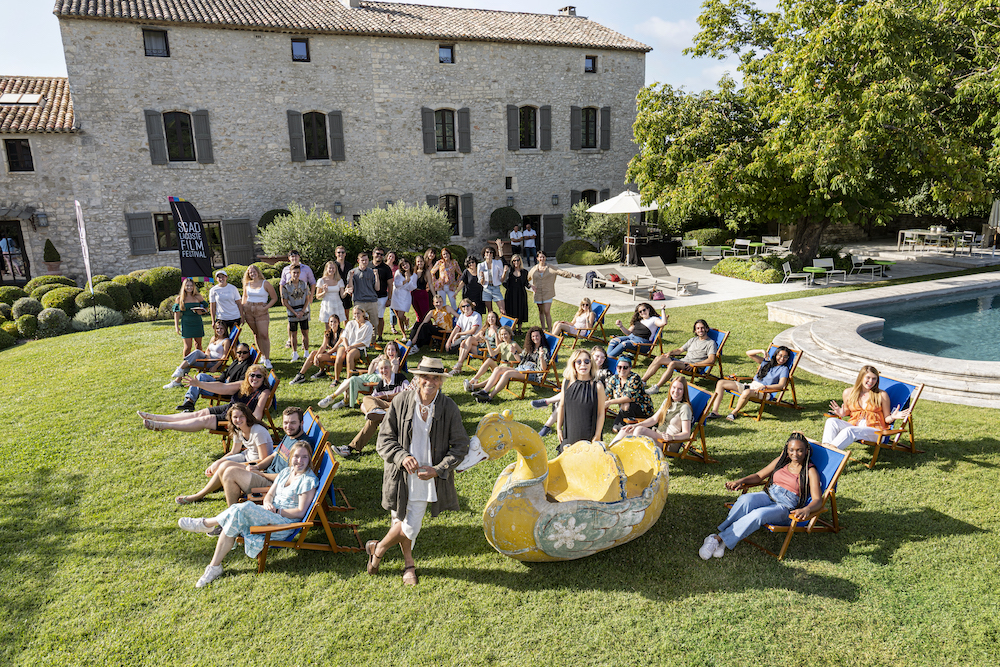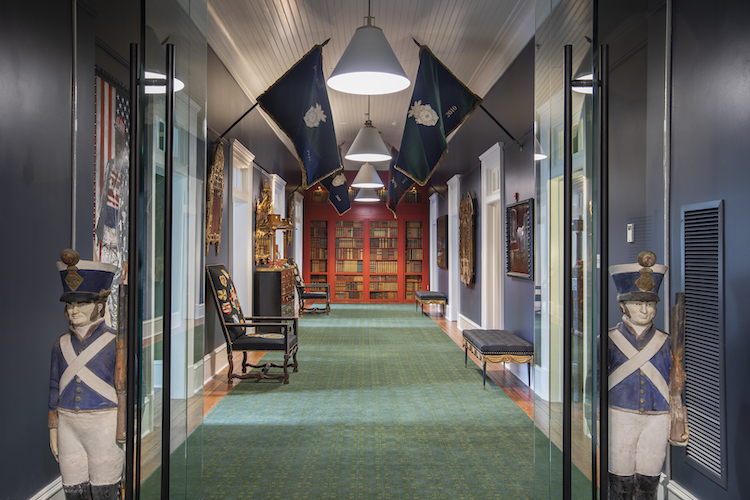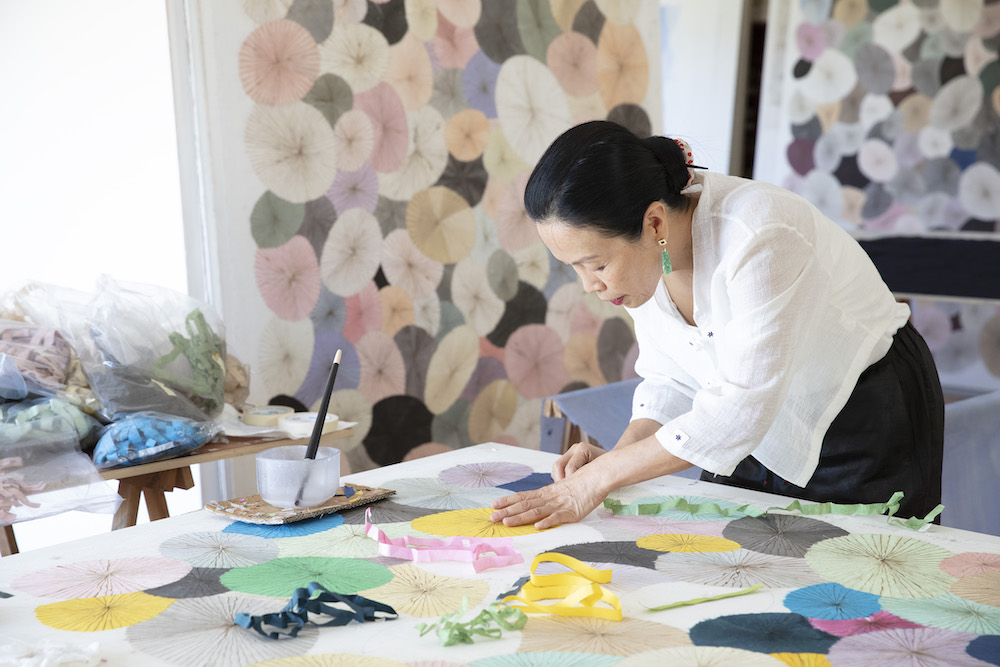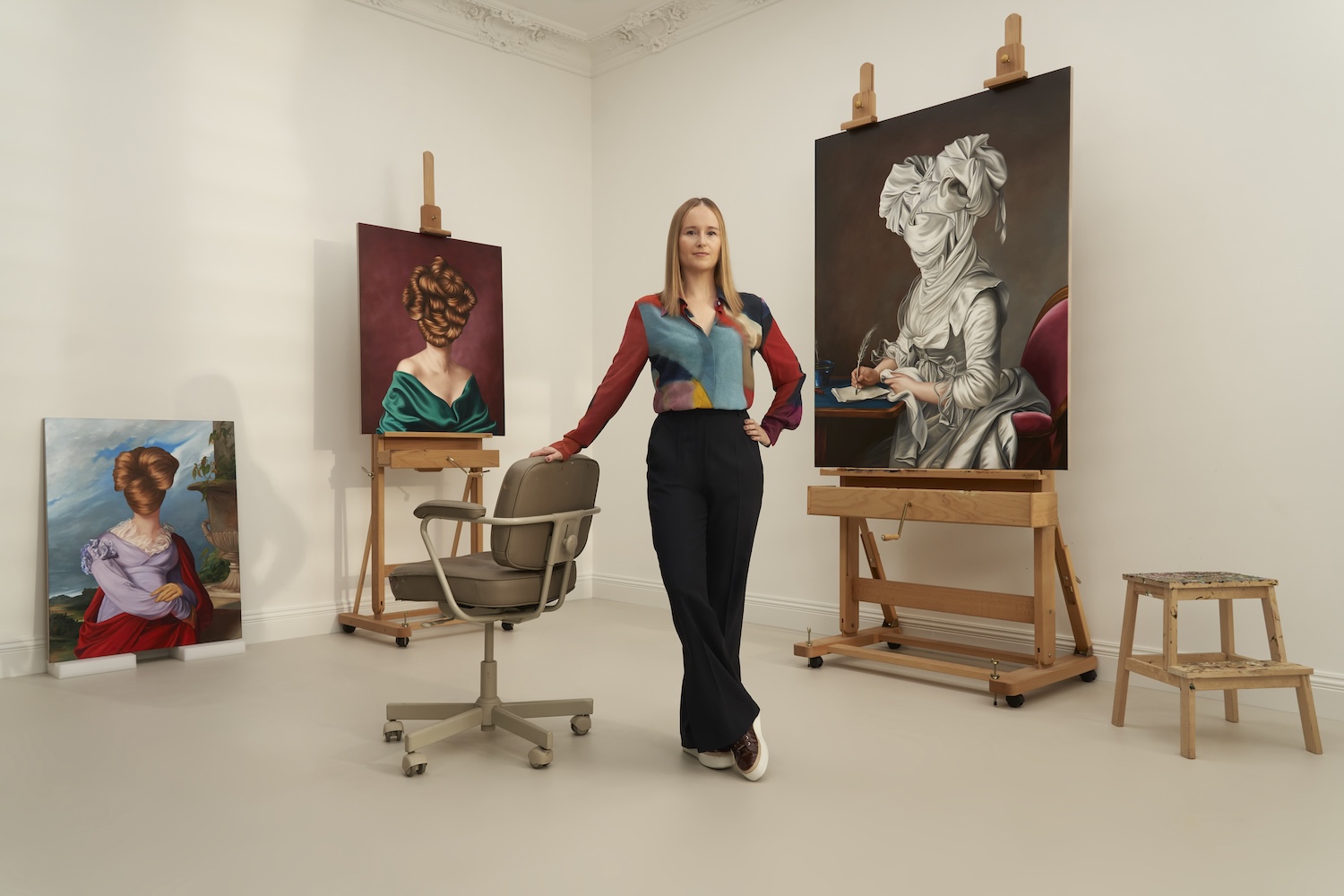In 1946, shortly after the end of the Second World War, Christian Dior opened his eponymous fashion house at 30 Avenue Montaigne in Paris. He had a vision to create clothing that emphasized the female figure, gave women what they wanted to wear, and inspired them to dream again.
Walking through “Christian Dior: Designer of Dreams” at the Brooklyn Museum this fall feels in some ways parallel to that time. After over a year of anxieties and fear around the ongoing pandemic, moving through the breathtaking, transformed Beaux-Arts Court is a reawakening of the senses—a rare moment to celebrate beauty, color, art, and passion.
Countless couture garments (many of which are on view for the first time for the traveling exhibition that has previously touched down and dazzled in cities like Paris, London, and Shanghai) stand in dialogue with art and design, contemporary and historical alike. With the Brooklyn Museum’s collection to work with, you’ll find current Dior Creative Director Maria Grazia Chiuri in dialogue with Judy Chicago, while past heads of the house like John Galliano and Raf Simons reference Baldini and Sterling Ruby nearby.
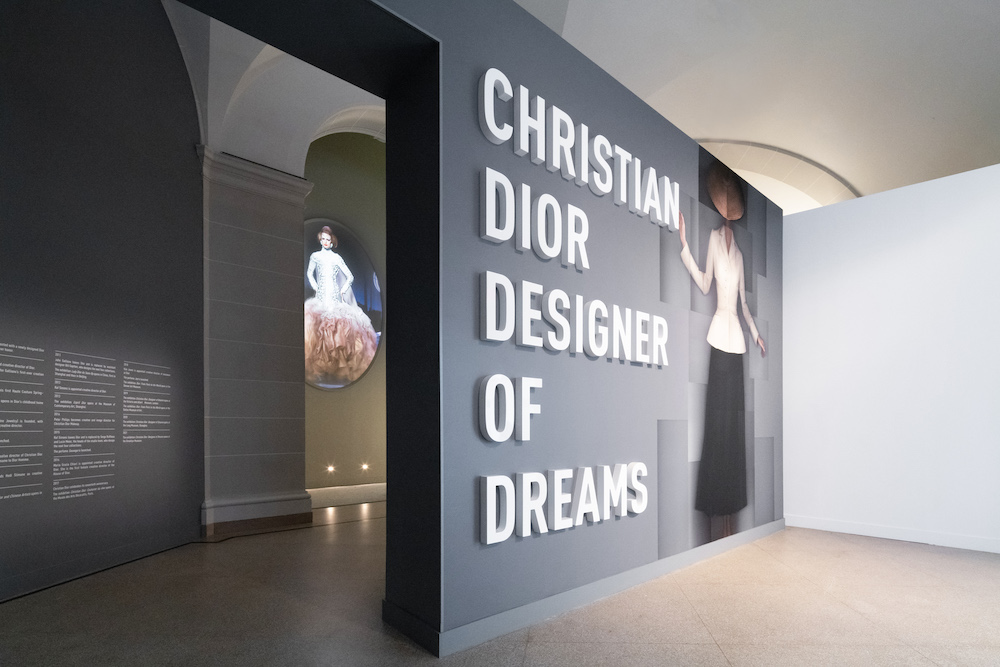
Installation view of “Christian Dior: Designer of Dreams,” photo by Here and Now Agency.
Unique to the New York iteration is a special focus on Mr. Dior’s relationship with the city, as well as the United States. The designer opened a New York salon on Fifth Avenue mere months after his “New Look” collection made a splash among critics and clients. His acclaim with American audiences helped propel the house to become a global success, making him the first couturier to set his sights on an international footprint. Also newly on view are photographs by American photographers like Richard Avedon, Cass Bird, Gordon Parks, Irving Penn, and Louise Dahl-Wolfe.
Mr. Dior’s fondness for New York (even naming dresses after the city or its skyscrapers like Sherry-Netherland) is documented in the earliest galleries, which then leads visitors to discover inspirations like the 18th century, gardens, color, and a legacy continued through talents like Yves Saint Laurent, Marc Bohan, Gianfranco Ferré, Galliano, Simons, and Chiuri.
To learn more about “Christian Dior: Designer of Dreams,” on view through February 20, 2022, Whitewall spoke with curators Florence Müller, Avenir Foundation Curator of Textile Art and Fashion at Denver Art Museum, and Matthew Yokobosky, Senior Curator of Fashion and Material Culture, Brooklyn Museum.
WHITEWALL: This exhibition, “Christian Dior: Designer of Dreams” has been shown in Paris, Shanghai, London, and now New York. How do you approach making it unique to each city?
FLORENCE MÜLLER: Each time is different due to the location and the museum. The architecture of the museum is very important, and in Brooklyn, the space is very special.
MATTHEW YOKOBOSKY: This is a large, 22,000 square foot space. The Beaux-Arts Court was designed in the late 19th century by McKim, Mead, & White and the central atrium was based on the cloister of Santa Maria della Pace in Rome. We’ve never had such a grand experience as this exhibition in that room.
FM: And on top of the architecture bringing a lot of ideas and feeling, about two-thirds of the dresses exhibited were not exhibited before. The couture house has one of the richest archival collections in the world, and it’s wonderful each time to renew the checklist and make discoveries of dresses never exhibited before.
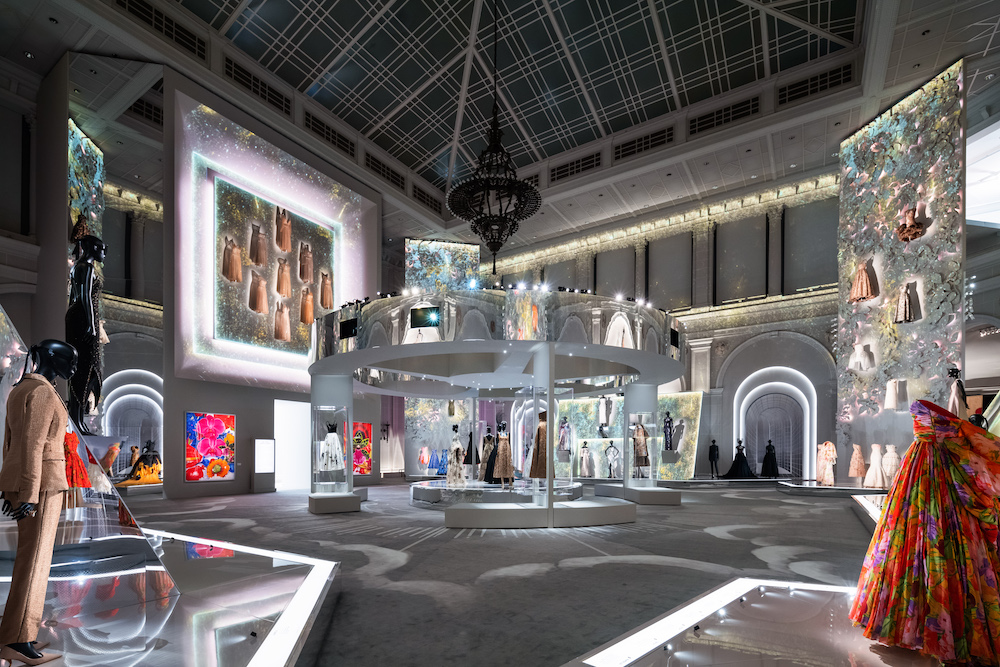
Installation view of “Christian Dior: Designer of Dreams,” photo by Here and Now Agency.
WW: Many visitors are seeing this for the first time. With “Designer of Dreams,” what kind of story do you want to tell of Mr. Dior, and his legacy?
FM: The exhibition is not presented as a retrospective, but there is retrospective content, presented in a manner that is not too obvious. The house was founded right after the Second World War with a vision so strong that it is still something desirable today. These beautiful ideas are still some of the most prominent proposals in the fashion world.
One of the main ideas of Christian Dior was to emphasize what is specific to a feminine body. Fashion previously was very masculine during the war. And after, everybody wanted to go back to something beautiful, dreamy, and seductive. And this message is contemporary. I think it’s not by accident that it’s a female designer who is now the creative director of Dior.
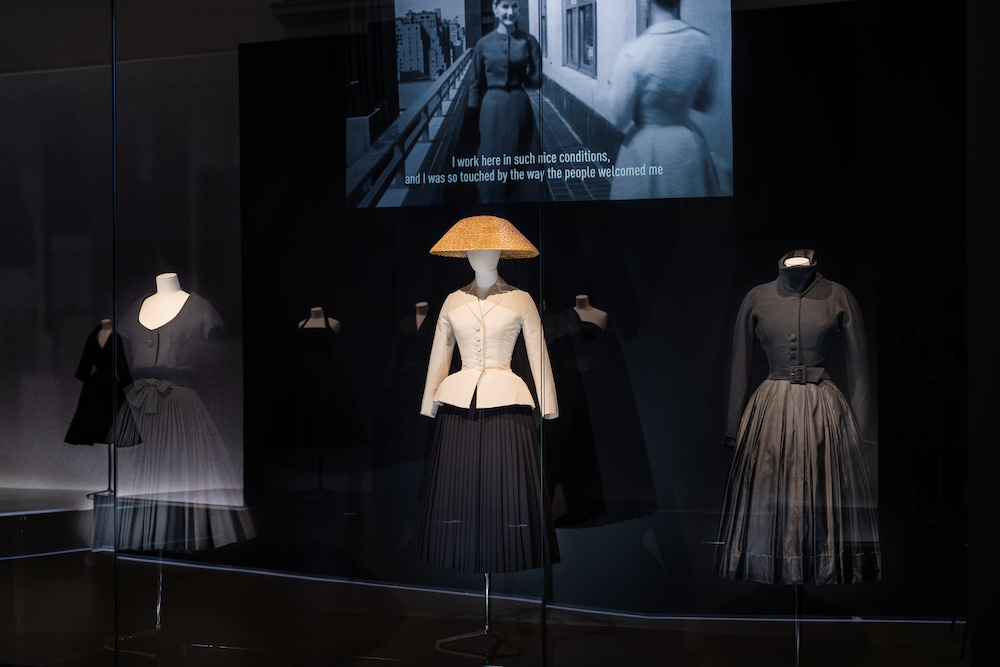
Installation view of “Christian Dior: Designer of Dreams,” photo by Here and Now Agency.
WW: There’s a specificity to New York in the show. What kind of relationship did Mr. Dior have with the city?
FM: Christian Dior opened a house in New York on Fifth Avenue in October 1948. It was his second house. It’s very important in the history of the house but also in the history of couture. It’s the first time that a French couturier developed a house abroad. This house in New York became the head spot to spread his name, his brand, and open many other houses and boutiques around the world. He’s the first couturier who has invented a global approach to fashion, and New York was the starting point.
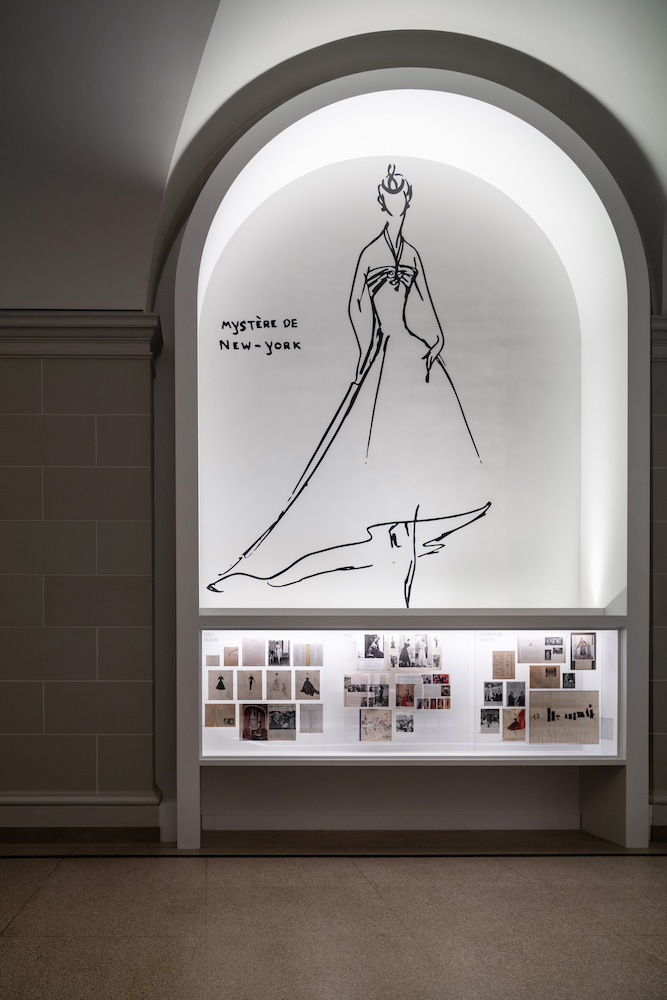
Installation view of “Christian Dior: Designer of Dreams,” photo by Here and Now Agency.
WW: Why do you think fashion critics, buyers in the US, and clients connected so well with the “New Look”?
FM: Women around the world really acclaimed this style—more than even the buyers and the magazines. They wanted to wear these large, long, supple skirts of the “New Look.” And there is another factor that explains how the American audience was so pleased with the Dior style. This style was very theatrical. Christian Dior knew and loved to design extravagant evening gowns. He was attracted to this because he was a showman. Before he was a couturier, he designed costumes for theater, dance, cinema, and many productions. He had a love of costume. This love encountered the style of American fashion, which was glamorous, Hollywood-oriented, Broadway-oriented, and pleased many American women.
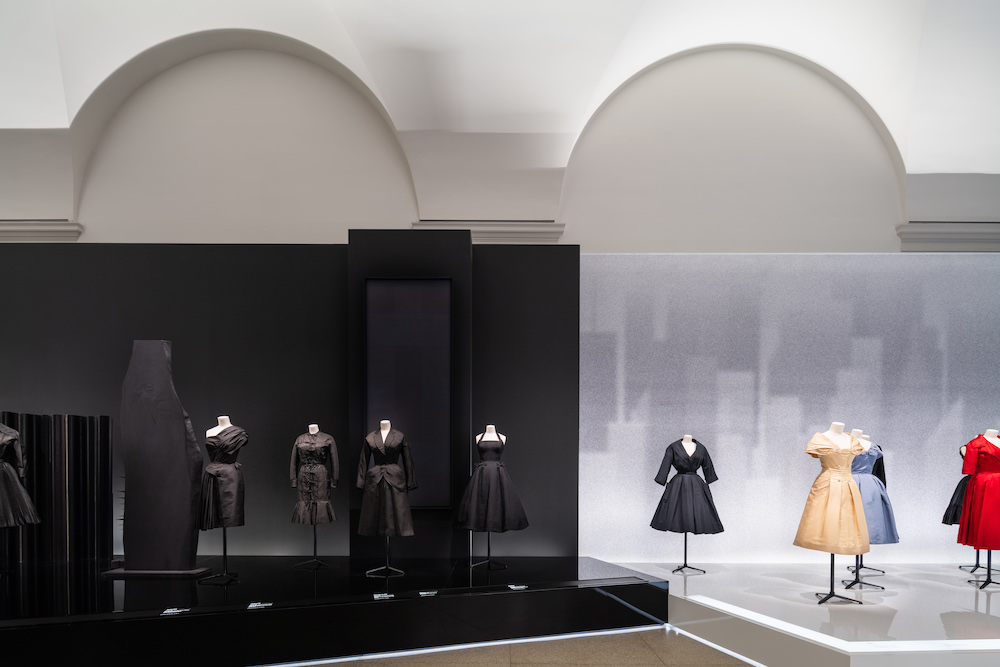
Installation view of “Christian Dior: Designer of Dreams,” photo by Here and Now Agency.
WW: And that spectacular style certainly translates into the feeling of the exhibition!
FM: Yes! A Dior exhibition should not be minimalist!
MY: Dior often spoke about how he saw how everybody from the millionaire’s wife down to the liftman’s daughter were all well dressed in America. He was so impressed by that. I think in America, because of where we were at that time in our history, it was appealing for people to have a new style of dress. It was a time when everybody was ready for something new and exciting and Dior brought that surprise.
WW: What did having the Brooklyn Museum collection at your fingertips add to the show? Can you tell us about some of the choices throughout the exhibition for historic and contemporary art and design pieces? And some were specially commissioned?
FM: I have to say that it was one of the most exciting parts of our collaboration, between Matthew and myself. We had great exchanges about this. It was very exciting. There is a commission by Billie Zangewa, who is the first female artist to create a posthumous portrait of Mr. Dior. And she worked with documents, movies from the fifties showing Dior working with his team and models doing a fitting. She had this fantasy of Christian Dior in the afterlife, still working and still creating dresses. And her medium is silk and fabric, which is a great conversation with a man who was used to working with the most beautiful, luxurious fabric.
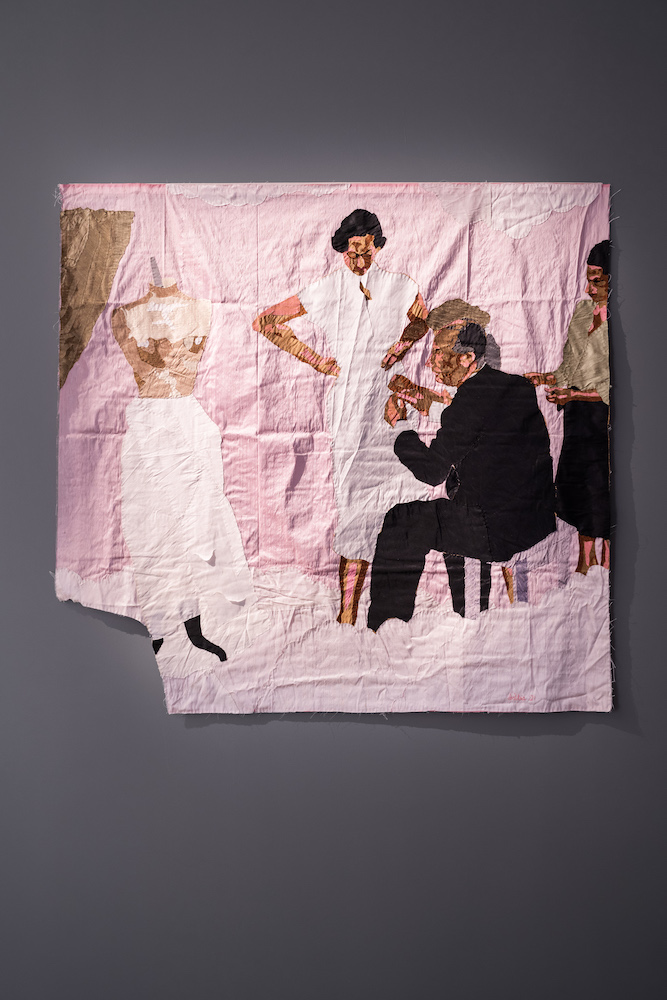
Installation view of “Christian Dior: Designer of Dreams,” photo by Here and Now Agency.
MY: Some of the relationships we developed were very direct—the Marc Bohan Pollock dress, we have a suite of Pollocks that are very direct. We have more direct relationships like Galliano riffing on Baldini.
But then, of course, we were working on the new 1950s section, “Christian Dior New York,” and he talked about the fact that he could design a collection entirely in black, that perhaps it was his favorite color. We asked, is this an idea that’s just his, or something that was in the air at that time? And there were many artists in the 1950s who also decided to work in black. Ad Reinhardt was making what he called his last paintings. Louise Nevelson convinced her cobbler to let her buy his shoebox that was covered in black shoe polish, and she exhibited that as a readymade artwork. And then, of course, you have the beautiful Charles and Ray Eames folding screen, which looks like a beautiful Dior skirt, with all of the folds in it.
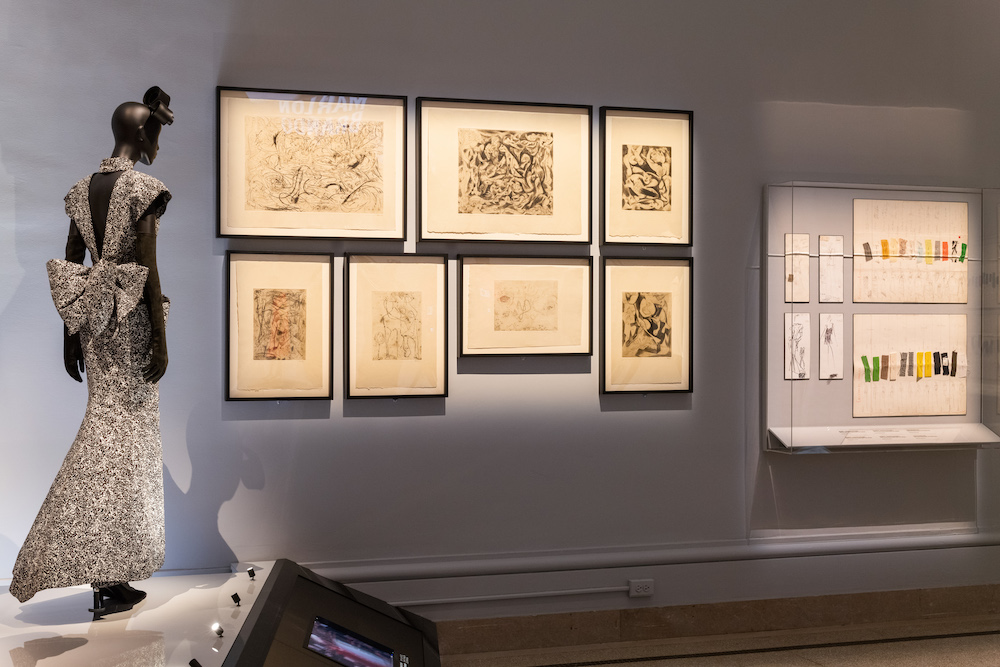
Installation view of “Christian Dior: Designer of Dreams,” photo by Here and Now Agency.
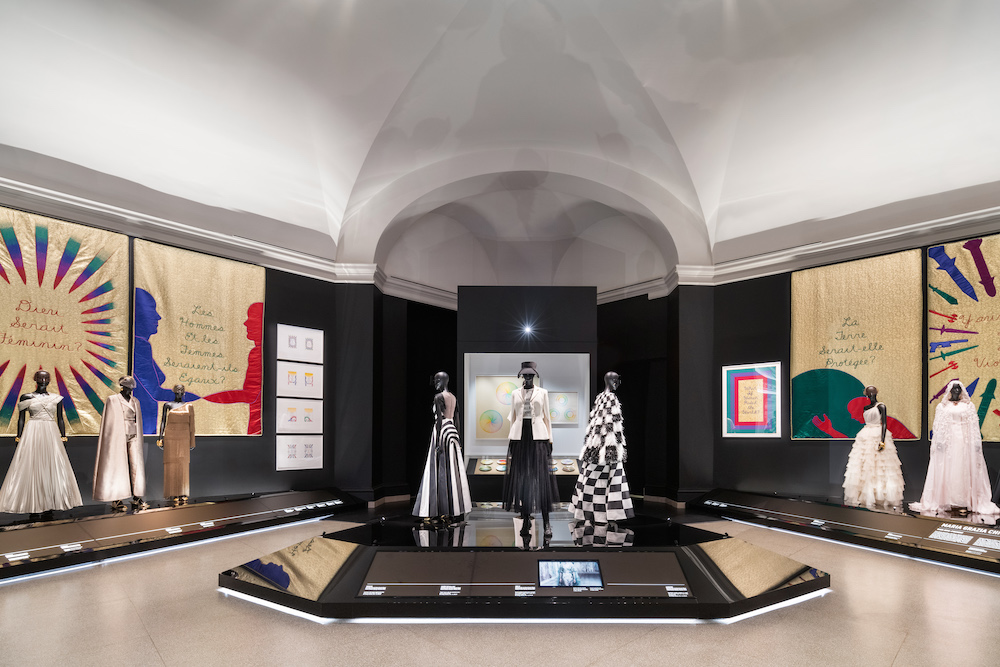
Installation view of “Christian Dior: Designer of Dreams,” photo by Here and Now Agency.
We also have Judy Chicago, which is a strong American connection. Maria Grazia had been at the museum with a group from the Italian embassy. She was on a tour and she saw Judy Chicago’s Dinner Party for the first time. It resulted in them collaborating and Judy realizing a setting for Maria Grazia’s next couture collections.
WW: The American Photographer section is stunning, full of iconic imagery and much more recent images. How would you describe the American eye for Dior? And the relationship between the house and American photographers today?
FM: There are many connections. Just to pick and choose, Avedon, the connection is the movement—he wanted to capture fashion in movement. It’s also something on which Christian Dior was working in the cut and structure of the garment. He wanted to keep this idea of women walking in the dress.
American photographers were coming to Paris every season, they would attend the shows, and then there was a battle between all the magazines deciding who would be the first to photograph it. And the American photographers had this love for Paris. They took advantage of all these places like Place de la Concorde, the bank of the river, and even Versailles. Christian Dior said several times that the vision of the photographers of his creations was giving him back new ideas. There was really a dialogue.
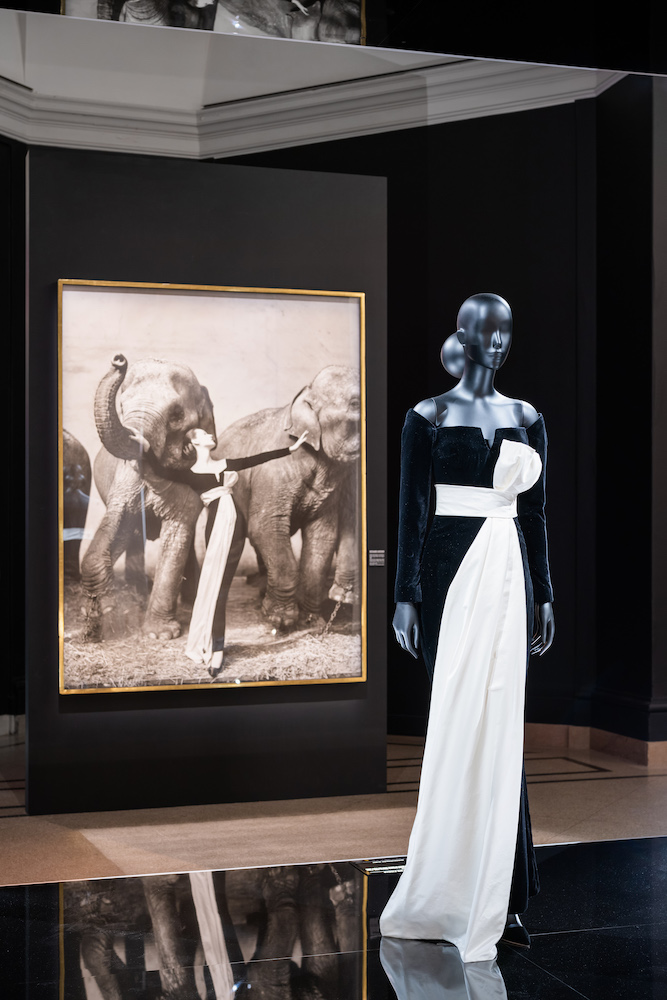
Installation view of “Christian Dior: Designer of Dreams,” photo by Here and Now Agency.
MY: A photographer like Richard Avedon was coming out of having learned photography as a merchant marine. A lot of the photographers after WWII had gotten a lot of their experience—the military had the best equipment at the time, the fastest films—so they learned how to take photographs in a very advanced way. They were able to go out on the streets and spontaneously take a photograph because they were used to working quickly. Once you get to the later photography it becomes a lot more cinematic.
FM: Many, like Cass Bird, take advantage of the amazing locations of the fashion shows. It’s more the opportunity of creating a diverse sensation and landscape—the universe is wider.
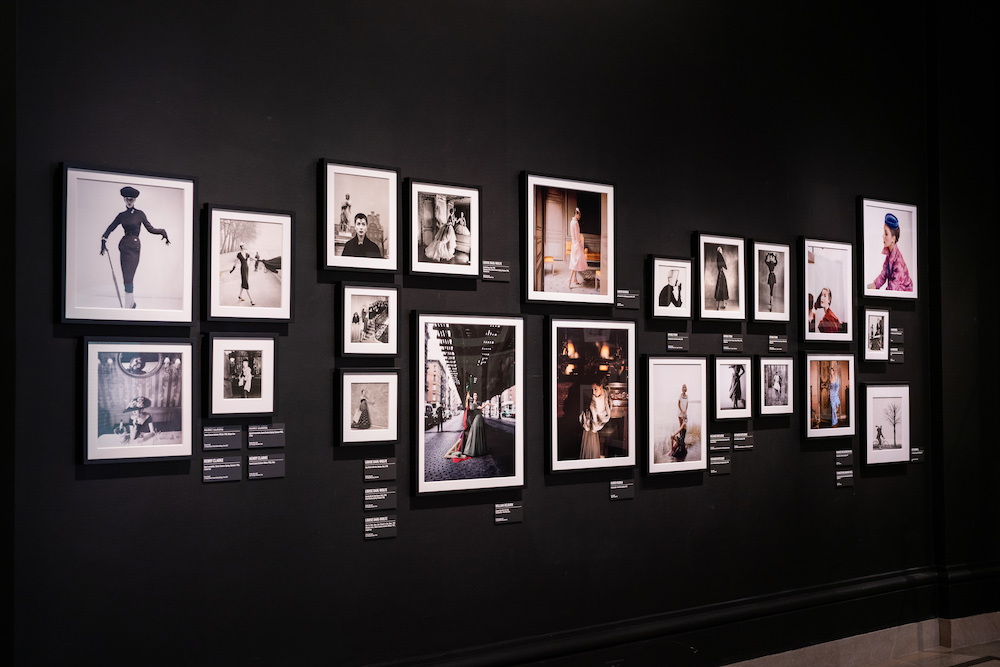
Installation view of “Christian Dior: Designer of Dreams,” photo by Here and Now Agency.
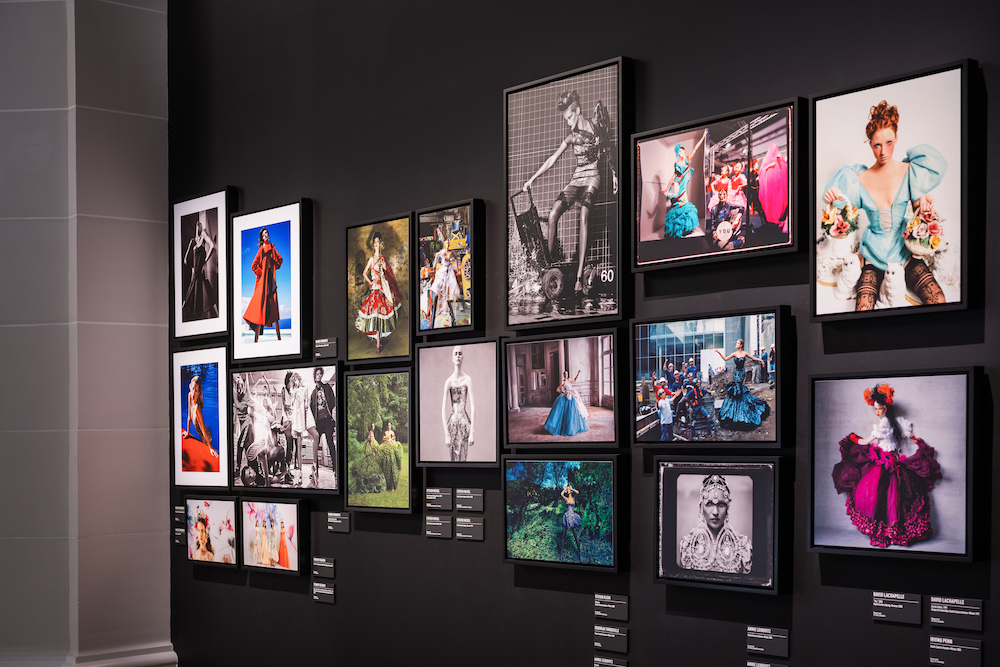
Installation view of “Christian Dior: Designer of Dreams,” photo by Here and Now Agency.
WW: The second to last gallery is simply breathtaking. It’s incredible how you get hints of it here and there as you move through the show, and then finally the big reveal. Can you tell us about putting this aspect of the show together? What kind of story did you want to tell here?
FM: It’s like a theater piece—Act I, Act II, Act III. It’s very important to keep the visitor excited. In the first section, you have a lot of documents where you can learn and discover. And at the end, it’s Act V, it’s an explosion. It combines many ideas that were presented before, but in an environment that is dreamier. It’s one of the important subjects of Dior, this idea of giving back the time to dream after the second World War.
There is also in the center, a whole idea that Maria Grazia has worked with several times of the mystical approach of the dress—this idea of tarot and zodiac signs. Christian Dior had also this very mystical approach to creation. He was always following what the signs were saying. The signs of the sky and what his advisors were telling him.
This space speaks to his will of creating a complete look—the total work of art where everything is involved, from the fashion show to the hats, the shoes, and the message.
MY: And this particular setting echoes the balls that Dior was designing dresses to be worn to during the 1950s, as well as this magical, cerebral, mystical aspect. It’s a melding of two inspirations, but two that fit very well together.
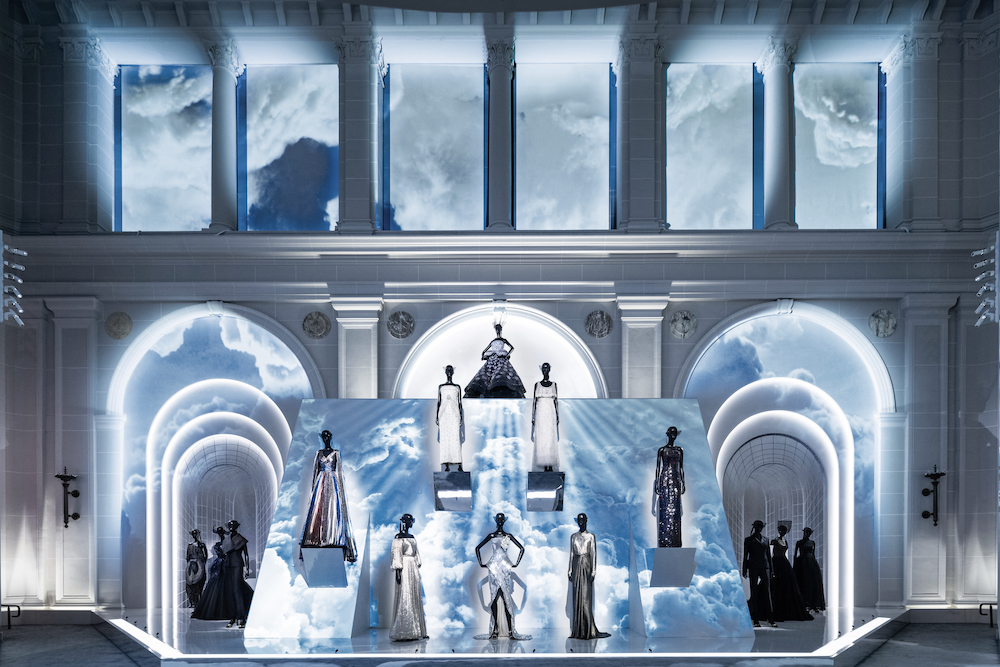
Installation view of “Christian Dior: Designer of Dreams,” photo by Here and Now Agency.
WW: The final moment of the show is Mr. Dior’s star. Can you tell us about this object, its significance, and why you wanted to end on this note?
FM: Back in 1946, he had met Marcel Boussac who was then the richest man in France. Boussac reached out to him to revamp an old couture house called Philippe et Gaston. When Dior received this proposal, he said, “Well no, I’m not interested in revamping a house…I have a vision. I have a vision of a house that is exactly what women are waiting for.” And he described the new house.
You have to remember, Christian Dior was a very shy and modest person. He was working in this house, Lucien Lelong, and for him it was nice. And perhaps enough. He was not sure he really wanted to start a couture house with all the troubles that it could bring. But he walked in the streets of Paris, he sees the star, and he picked it up and said, “Okay this is a sign, I have to do it.”
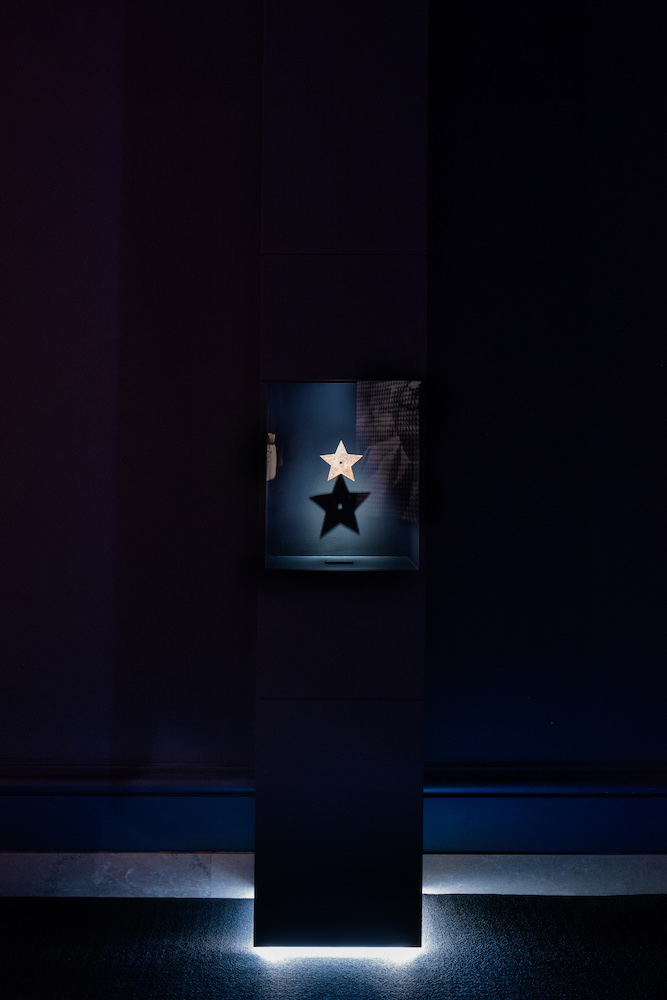
Installation view of “Christian Dior: Designer of Dreams,” photo by Here and Now Agency.


